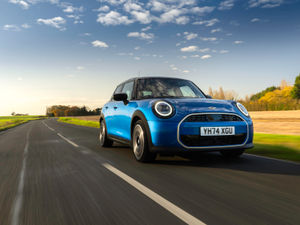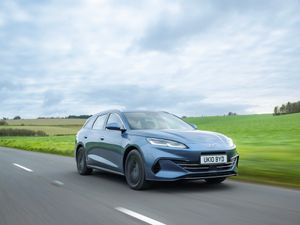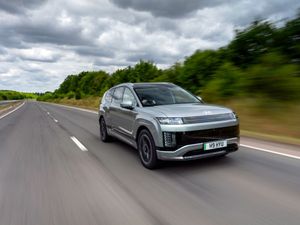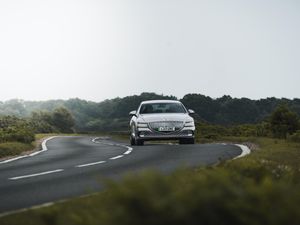UK Drive: Is the Range Rover Velar a premium SUV worth choosing?
Range Rover has tweaked the stylish Velar for 2023. Ted Welford tries it out.
What is it?
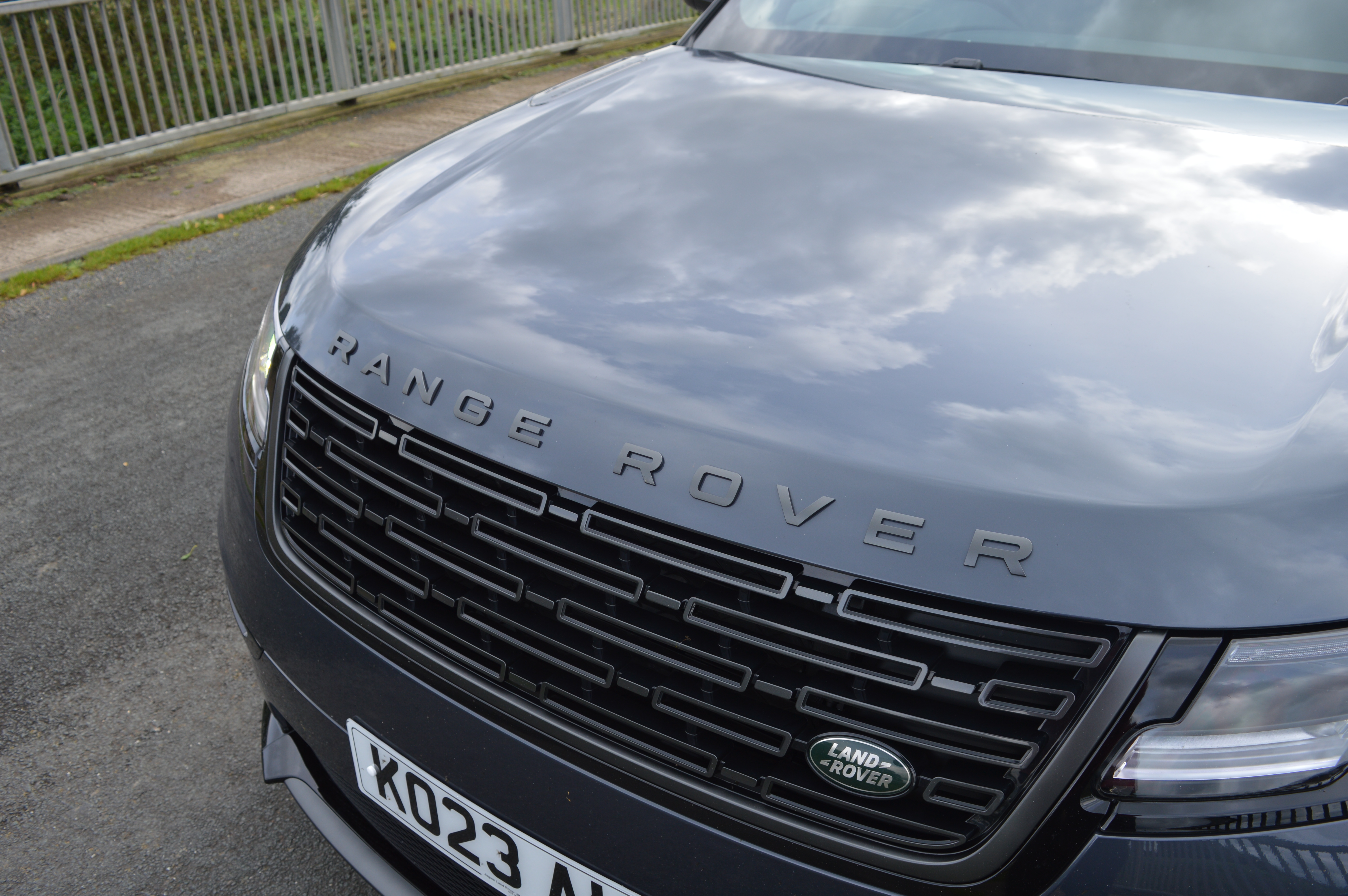
While at one point there was just a single ‘Range Rover’, these days the line-up of vehicles wearing that coveted nameplate spans four different models.
Sitting in the middle is the Range Rover Velar – a style-oriented SUV that was its first coupe-styled car back in 2017. It’s always been a slightly tricky model to pigeonhole, and sales have never been as strong as cars like the smaller Evoque and larger Sport.
It faces even more challenges these days too, with Audi, BMW and Mercedes all now offering coupe-SUVs of a similar price and size. It’s why the Velar has had a recent update, but is it worth considering?
What’s new?
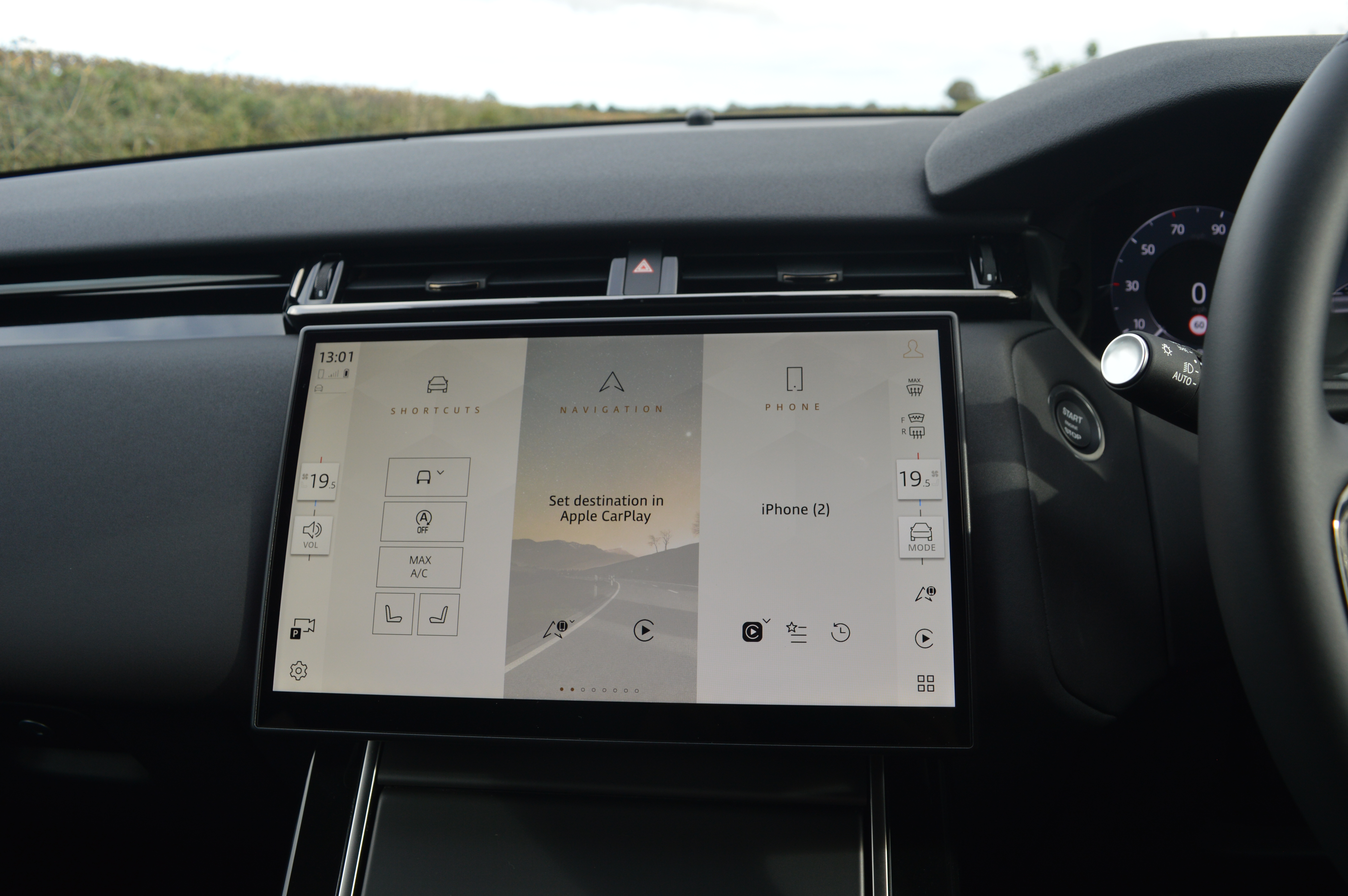
At face value, you might wonder if anything at all is new about the Range Rover Velar. Look a bit closer (okay, really close) and you will notice this SUV now has slimmer headlights, along with a new grille with a different pattern.
But it’s inside where the Velar has changed the most. Previous models had a twin-screen touchscreen setup, one looking after media settings and another for the climate menu. But these have both been replaced by a single curved display, mirroring the setup of the latest ‘full-size’ Range Rover.
What’s under the bonnet?
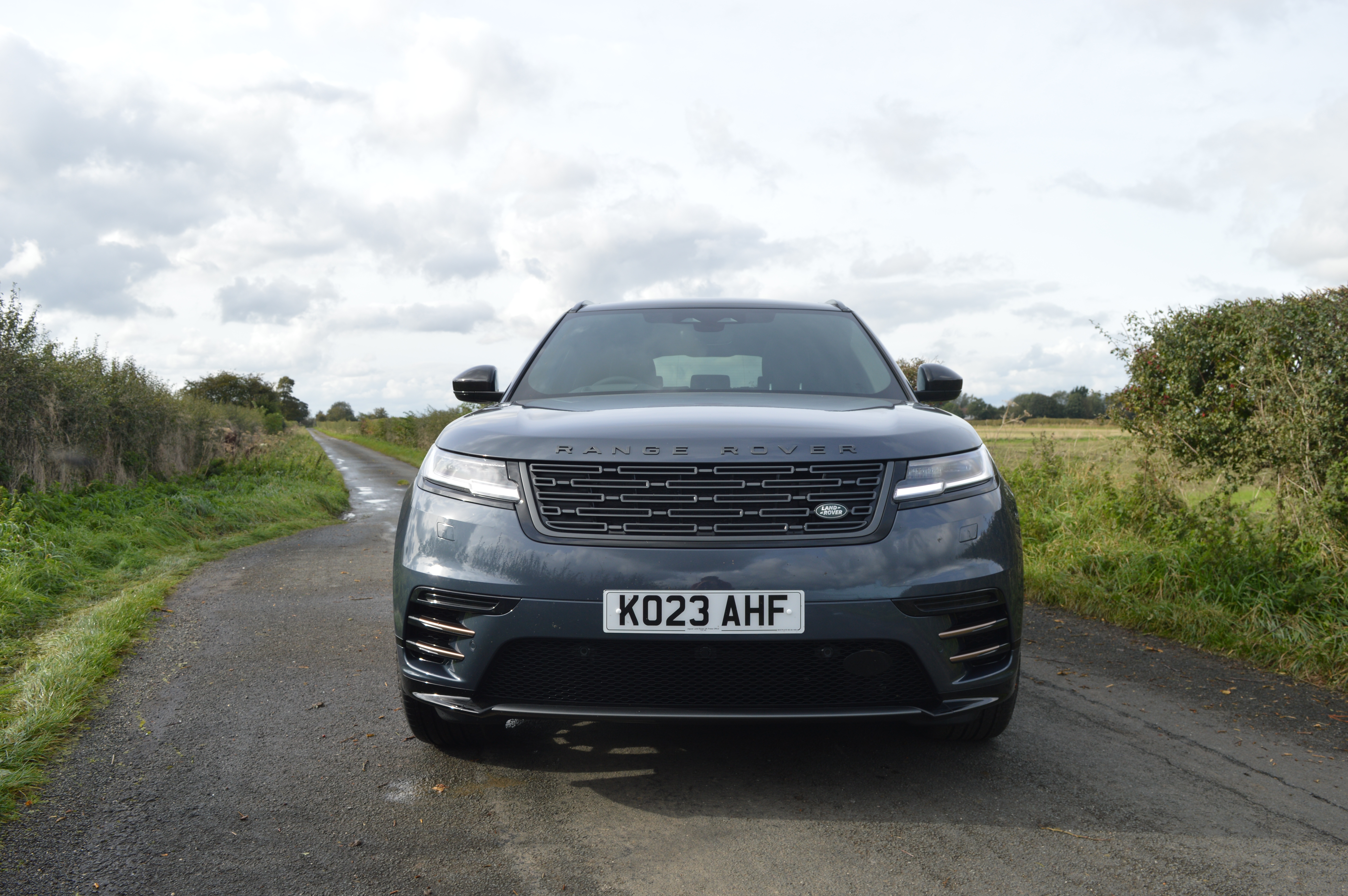
One area where you can’t criticise the Velar is its lack of choice under the bonnet. You can choose it with petrol, diesel and also a plug-in hybrid model. This latter version has been revised with a larger battery enabling 40 miles of range as part of this update.
Our test car uses something a little more traditional, a 201bhp 2.0-litre turbocharged diesel, albeit with mild-hybrid technology that marginally improves fuel economy. Called the D200, it’s the cheapest engine for the Velar, and is paired with an eight-speed automatic gearbox that sends drive to all wheels.
Accelerating to 60mph in this Velar will take 7.8 seconds, while in terms of fuel economy, Range Rover claims 41.6mpg with 178g/km CO2 emissions.
What’s it like to drive?
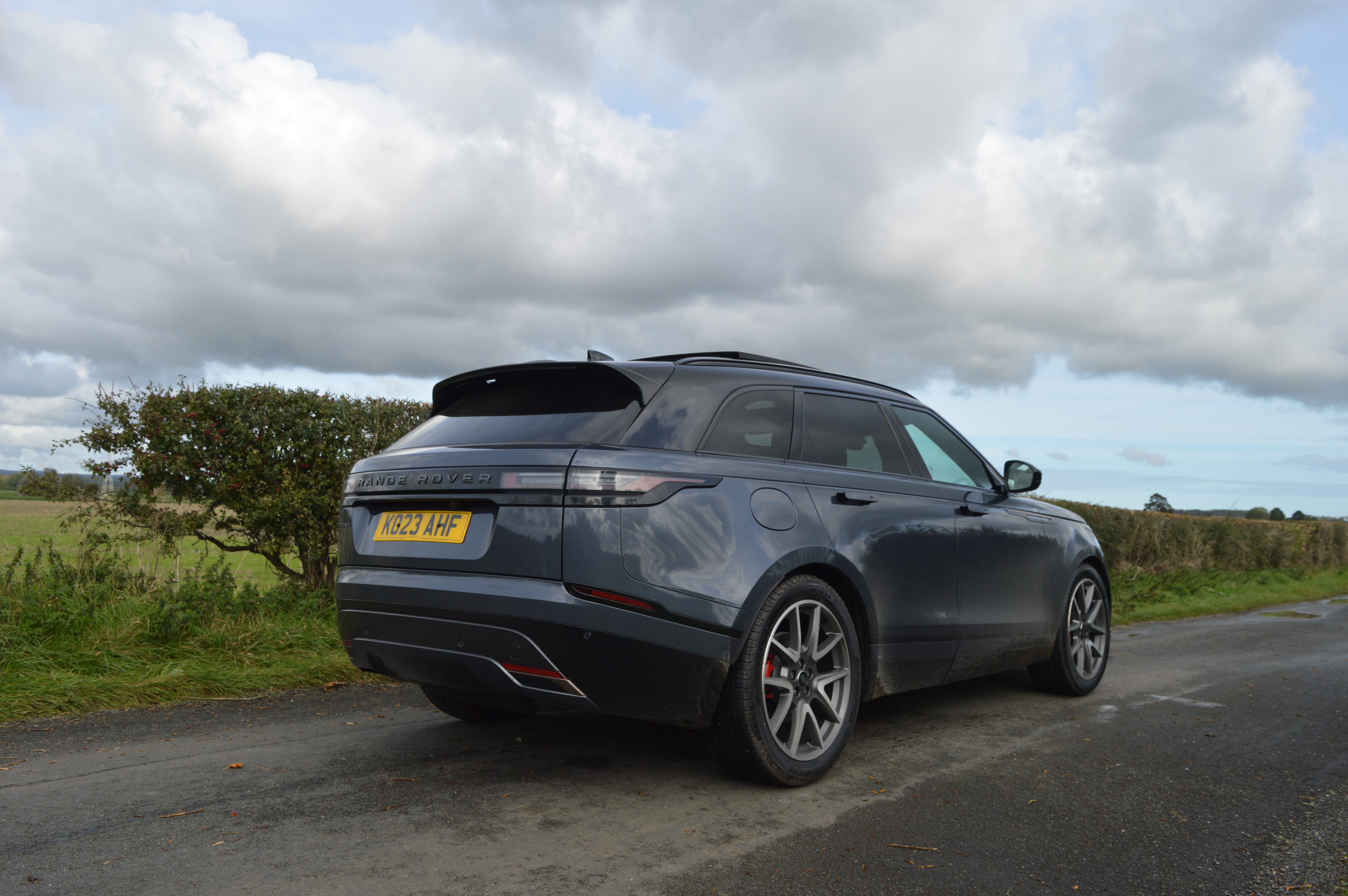
Even with a fairly lukewarm diesel engine under the bonnet, it’s clear the Velar sits at the more dynamic end of the SUV spectrum. For a two-tonne SUV, it handles remarkably well, feeling surprisingly nimble and with minimal roll through the corners as well. This four-cylinder diesel engine does the Velar no favours, however. It’s neither particularly fast nor efficient and sounds gruff under harsh acceleration. We reckon that a smoother six-cylinder unit under the bonnet would make a big difference.
Though coil suspension is the default on the Velar, our test car came on optional air suspension (included as part of the £2,225 ‘Dynamic Handling’ pack), and it’s worth choosing as even on 21-inch alloy wheels, the ride quality was superb, while the ability to have the suspension at different heights could come in useful if you want that additional ground clearance.
How does it look?
Design has always been front and centre of the Velar, and we can’t say we blame Range Rover for hardly altering this SUV’s styling since its 2017 introduction. From a looks perspective, it looks as fresh today as it did more than six years ago.
The relatively low-set look of the Velar makes it seem sportier immediately, while the coupe-like profile and large rear spoiler really do help this SUV look the part. The upgraded LED lighting at both the front and rear of the Velar helps to modernise it slightly, while the spec on our test car with a dark blue paint finish, rose gold detailing and large 21-inch alloy wheels was superb.
What’s it like inside?
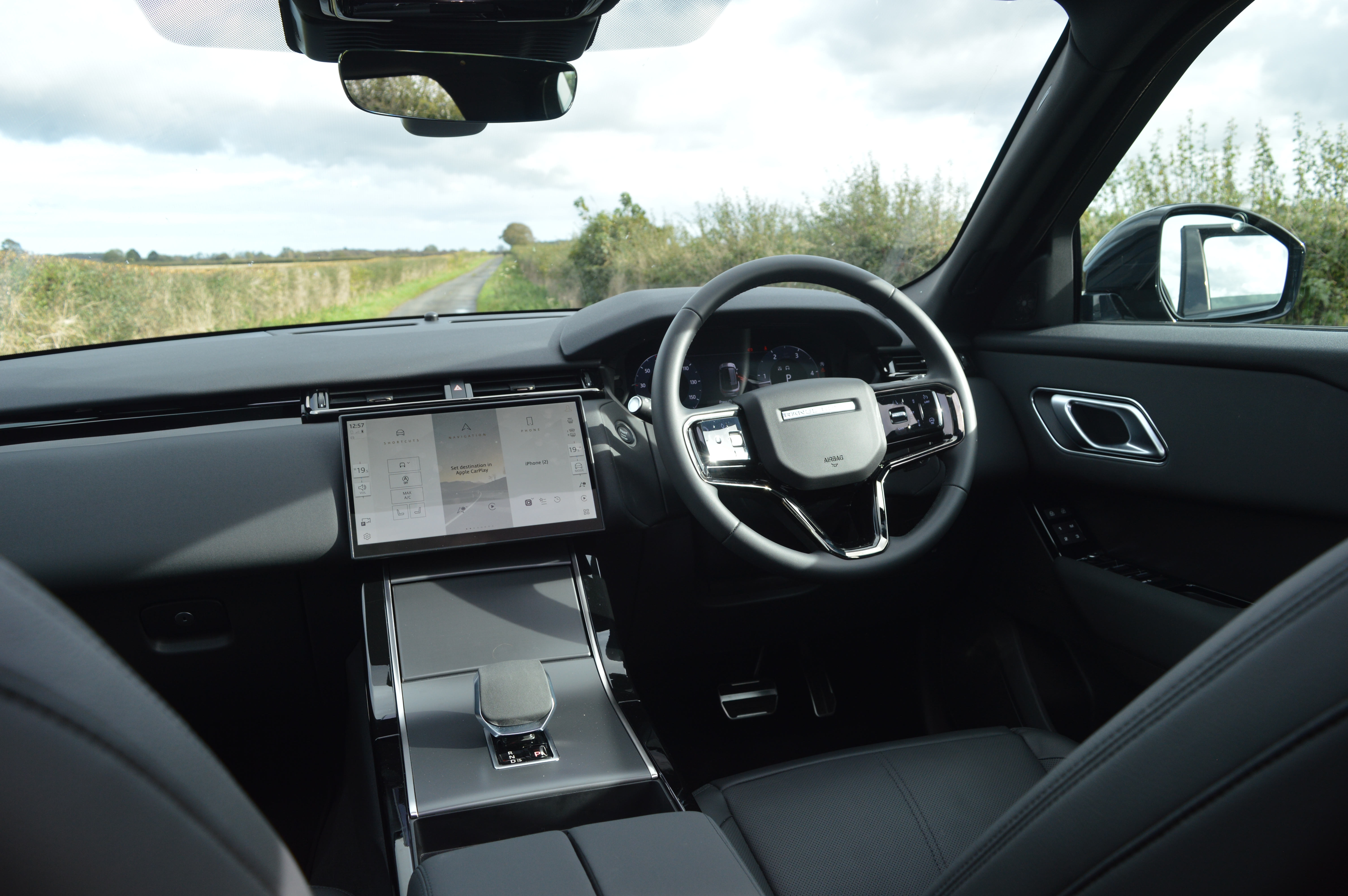
As we’ve mentioned, the big change with the Velar is the revised interior design. The previous two screens weren’t always the most slick to operate, so we liked the idea of replacing them with one screen instead. The responsiveness of the setup, courtesy of running Range Rover’s latest infotainment software, is excellent, though we reckon there are just too many features included in it, which can make it tricky to use while on the move.
While we appreciate that minimalism is the new chosen style at Range Rover, it’s gone a bit too far with the Velar. The previous area where the second touchscreen has been replaced by a rather small – and pointless – storage area. This area of the cabin just seems a bit of an afterthought.
As for space, it’s hard to knock the giant 552-litre boot, though the rear-seat space, particularly legroom, isn’t all that generous for a car of this size.
What’s the spec like?
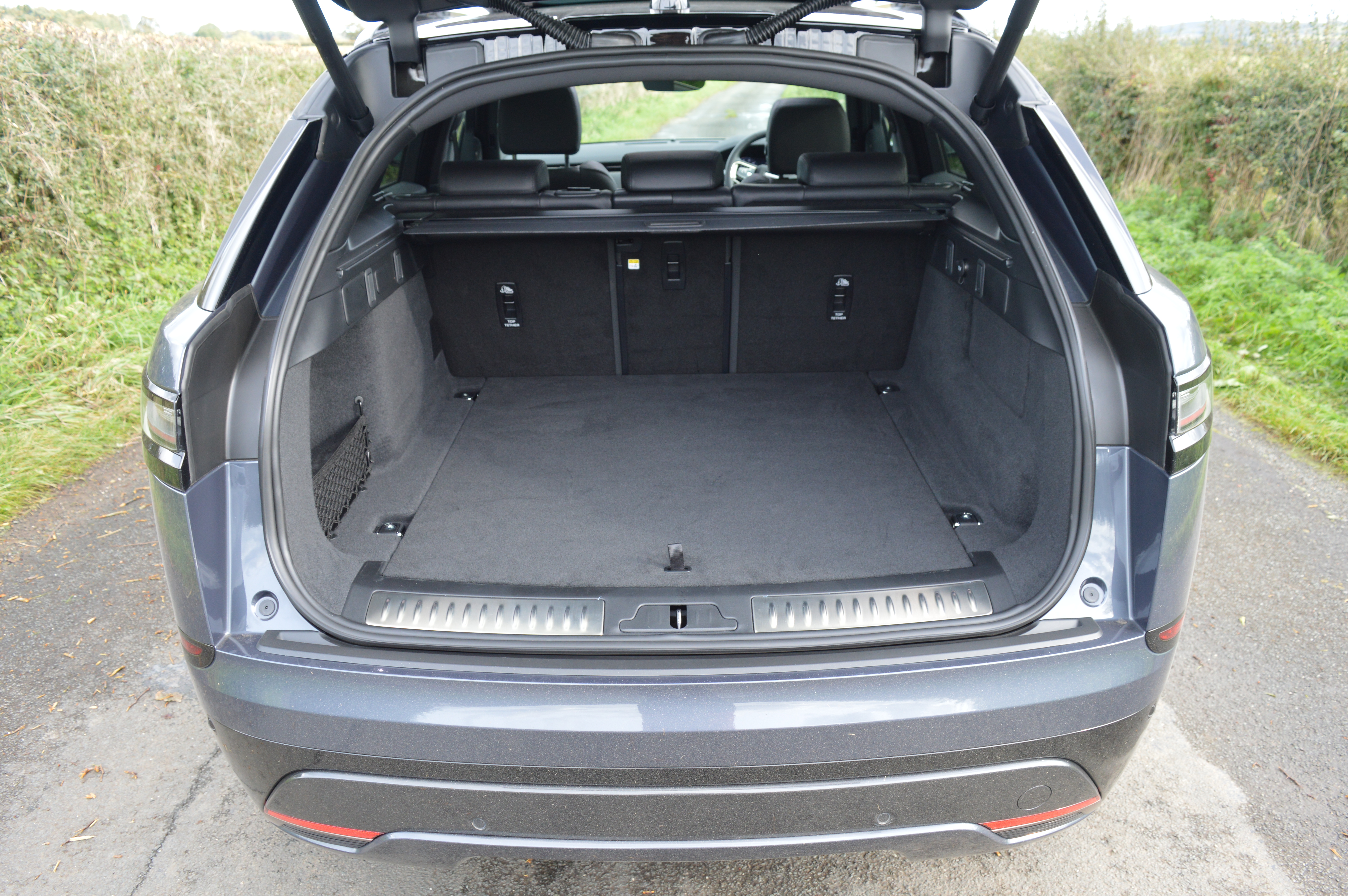
At launch, you could pick up a new Velar for under £45,000, but with all the new car price rises in recent years, the Velar has shot up considerably and now starts from a fairly steep £54,455. Standard equipment is generous, though, including 19-inch alloy wheels, heated and electric seats and full leather upholstery.
If you’re looking for something a little sportier, we’d be tempted by the Dynamic SE trim model tested here. It gets smarter 20-inch alloy wheels and a more performance-oriented look, though does command a £4,000 premium.
But be careful with the number of optional extras as it’s very easy for the Velar’s price to climb. Our test car had almost £10,000 of extras, raising up the price to almost £68,000. For a four-cylinder diesel SUV, that is just too much money.
Verdict
Even with fairly minimal updates, the Range Rover Velar has been suitably improved for 2023. It’s arguably still the best-looking SUV you can buy, and with impressive driving manners and a high-quality feel, it does all that’s expected of a mid-size premium SUV.
We’d probably avoid this D200 diesel engine, as its unrefined nature doesn’t suit the Velar’s character. But with another setup under the bonnet, this remains an SUV that’s still up there with the best that its German rivals have to offer.


